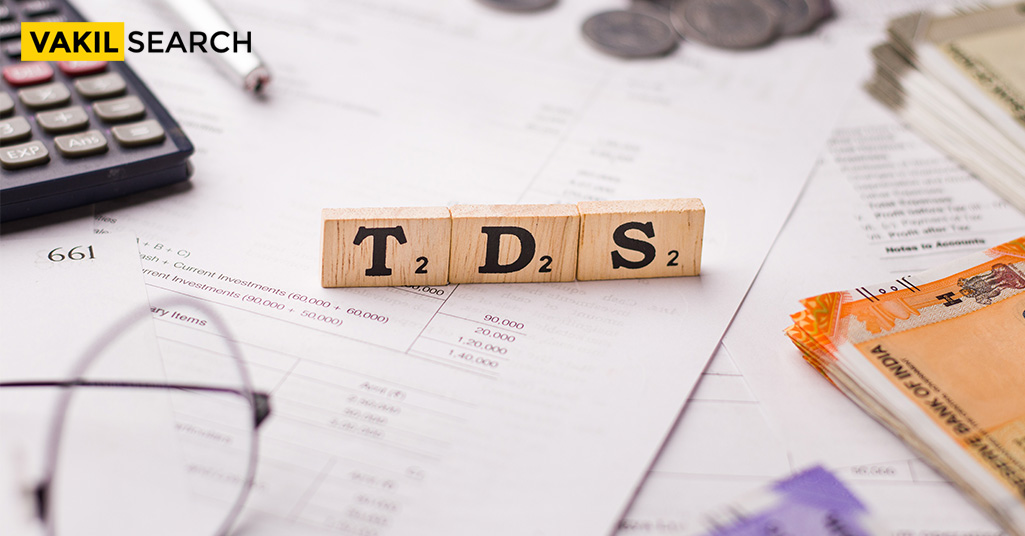Explore the duration it takes for your online TDS payment to reflect in your account balance. Understand the waiting period and stay informed.
Introduction
TDS or Tax Deducted at Source is the amount of money reduced by the employer from the salary of a person- who is a taxpayer before getting it in full, and deposits the money thus set aside from the salary to the income tax department on behalf of the employee. There are fixed rates set based on the age brackets and tax slabs on the various income amounts of different individuals. Know more on Online TDS Payment.
Definition of TDS & Managing TDS
TDS or Tax Deducted at Source is a specific amount reduced when a certain payment like salary/commission/rent/interest / professional fees, etc. The person/employer / disbursing entity who is making the Payment Deducts Tax at the source (while paying).
The person who receives the payment/income and has the liability to pay Tax on the amount he receives doesn’t need to worry about it anymore because he already receives the taxed amount. It lowers tax evasion because the Tax gets duly collected when they get their monthly remuneration.
Why is TDS Deducted and Its Liability?
- If payments specified under the Income Tax Act are made, then TDS will be deducted at the time of these payments. However, no TDS will be deducted if the party getting paid is an individual or Hindu Undivided Family (HUF), and the records need no auditing.
- In case of rent payment by an individual or HUF member, where the amount payable exceeds ₹50,000, then a TDS of 5% will be deducted even if the records are not liable for a tax audit.
- The paid party must apply for a Tax Deduction Account Number (TAN) if they are liable to have TDS deducted at 5%.
- The employer shall deduct TDS as per a working professional’s applicable income tax slab rates. The bank where the employee holds an active account will deduct TDS at 10%.
- If they do not have the employee’s PAN details, TDS at 20% will be deducted. For most salaries or payments made to the party, the Tax rates deducted at source are set in the Income Tax Act, which the payer removes as TDS (as per the rates applicable).
- The employee getting paid an amount of money after TDS will be required to pay any tax if they submit their investment proofs to the employer and their total income to be taxed below the total taxable threshold. Thus, no TDS will be deducted in this case.
- The employee can also submit Form 15G and Form 15H to the bank if the total taxable income is below the total taxable limit. The bank, in this case, will not deduct any TDS on their interest income.
- If an employee fails to submit the investment proof to their employer, the bank deducts the TDS. They can file a return and claim a refund of it (provided the total taxable income is below the total taxable limit.)
Following are the three types of challans introduced by the Income Tax Department:
- Challan No. ITNS 280- used for the payment of Income Tax (Self-Assessment Tax, Advance tax, Tax on regular assessment, Tax on distributed profits or income)
- Challan No. ITNS 281- used in case of depositing at Tax deducted at source or collected at source
- Challan No. ITNS 282- for the payment of Gift Tax, Wealth Tax, Expenditure Tax, Estate Duty, Securities Transaction Tax and Other Direct Taxes
Process for Offline Challan Submission
- Download the excel format of the TDS challan
- Enable editing and content
- Fill in the required details
- Take the printout of the challan
- Submit the challan to the bank along with the amount to be paid
- On submission of the challan, the bank will issue a counterfoil/ receipt back stamped as proof of submission.
Payment can be made in cash as well as by cheque. If payment is made at the branch where the payer has an account, and such payment is made in cash/ cheque, the bank shall accept the cash or cheque. It will immediately stamp the counterfoil of the challan with a rubber stamp containing the Challan Identification Number.
Process for Filing Challan Online
- Log in to the e-tax payment system website;
- Click on Challan No./ ITNS 281;
- Fill in the required details such as TAN no., address, mode of payment, bank name, etc. and click on proceed;
- A confirmation screen will be displayed; check the details entered;
- Click on “Submit to the bank”;
- The page shall get redirected to the net-banking site of the bank;
- One needs to enter the user id and password provided by the bank for net-banking purposes;
- Then enter the additional details of the payment, i.e., the amount to be paid;
- Click on submit.
A challan counterfoil shall be displayed on successful payment containing the CIN No., payment details, and bank name through which e-payment has been made.
Challan Status Inquiry:
- CIN based view: by providing the Challan Identification Number
- TAN based view: by providing TAN (Tax Deduction Account Number and Challan Tender Date
Penalty for Late Filing TDS Return
An event where any of the following conditions occur could elicit the Tax Department to charge one with penalties or fines ranging from ₹100 to ₹500
- Failure to submit the TDS returns
- For defaults in the filing of the TDS statement
- For incorrect details
- For non-payment of TDS
- In the case where TDS is deducted on time but not deposited within the specified time period, interest on such an amount is payable at the rate of 1.5% per month from the date on which it should have been paid.
Conclusion:-
There are fairly many advantages of TDS as it ensures that people do not evade the payment of taxes. Tax deducted: https://www.incometax.gov.in/iec/foportal/ at the source of both the salaried and non-salaried class acts as a steady source of revenue for the Government.
It is way more convenient for the salaried employee as the tax amount payable is automatically deducted. The tax collection agencies’ burden to collect taxes is significantly reduced. There are considerable relaxed TDS Provisions for the ST Community. Scheduled Tribe Category do not have to pay TDS on Interest from Bank Deposit.
- Form 45A – Income Tax Department
- Steps to file TDS on Property Sale
- Form 10 BB – Income Tax Department










